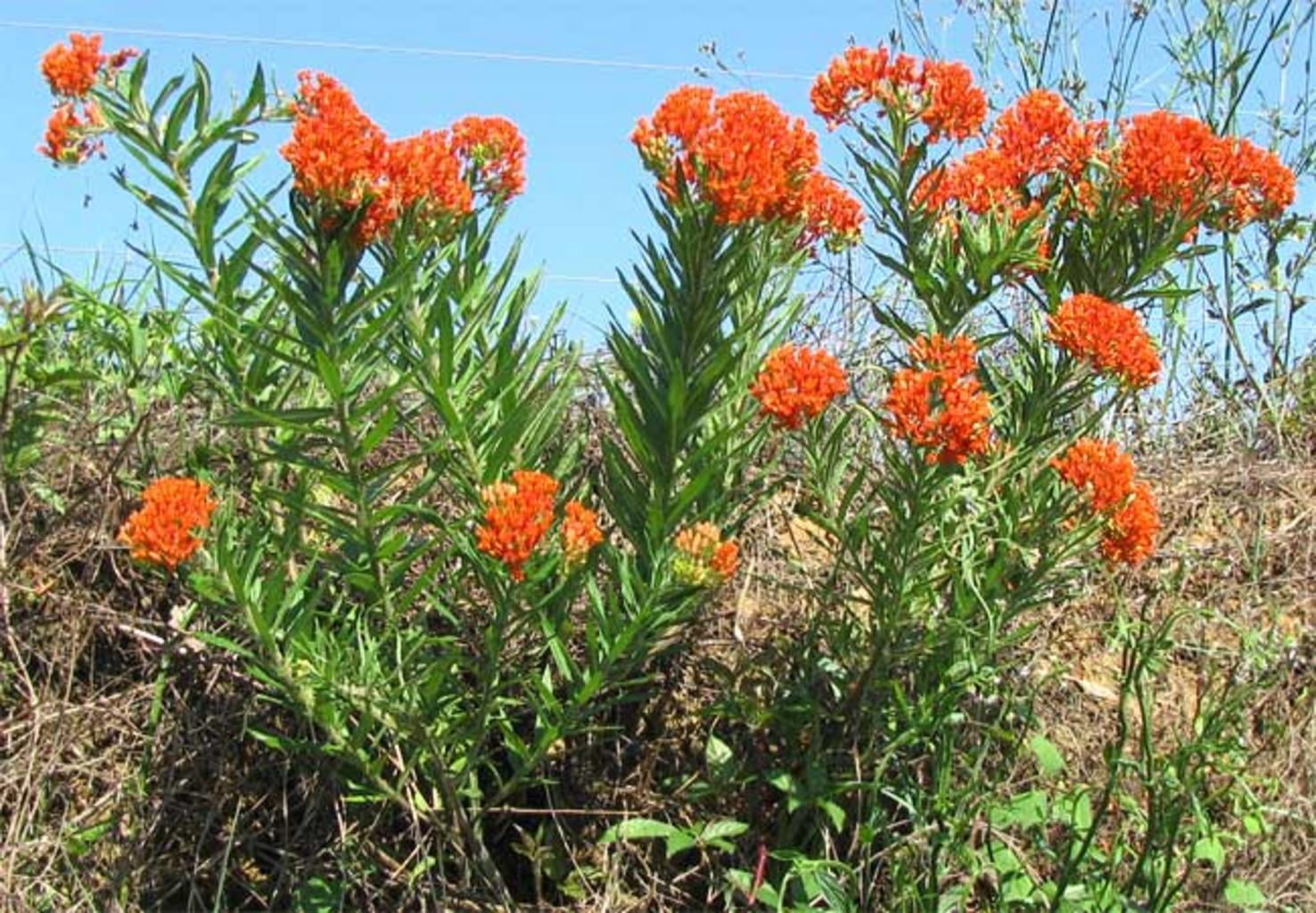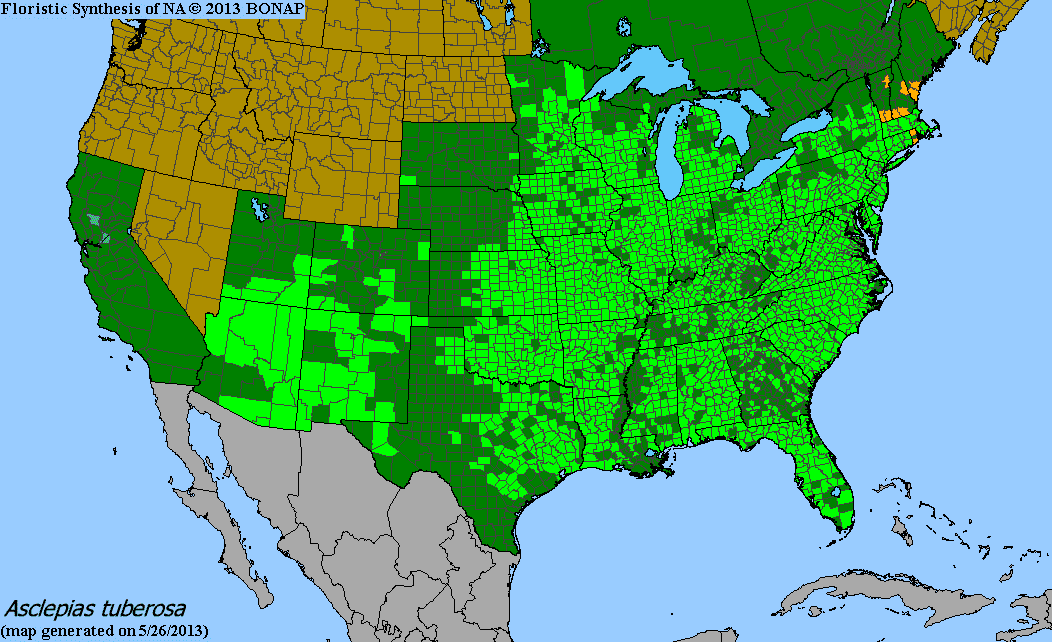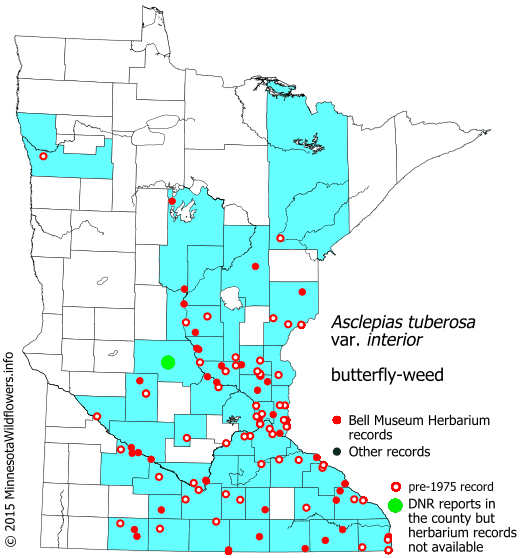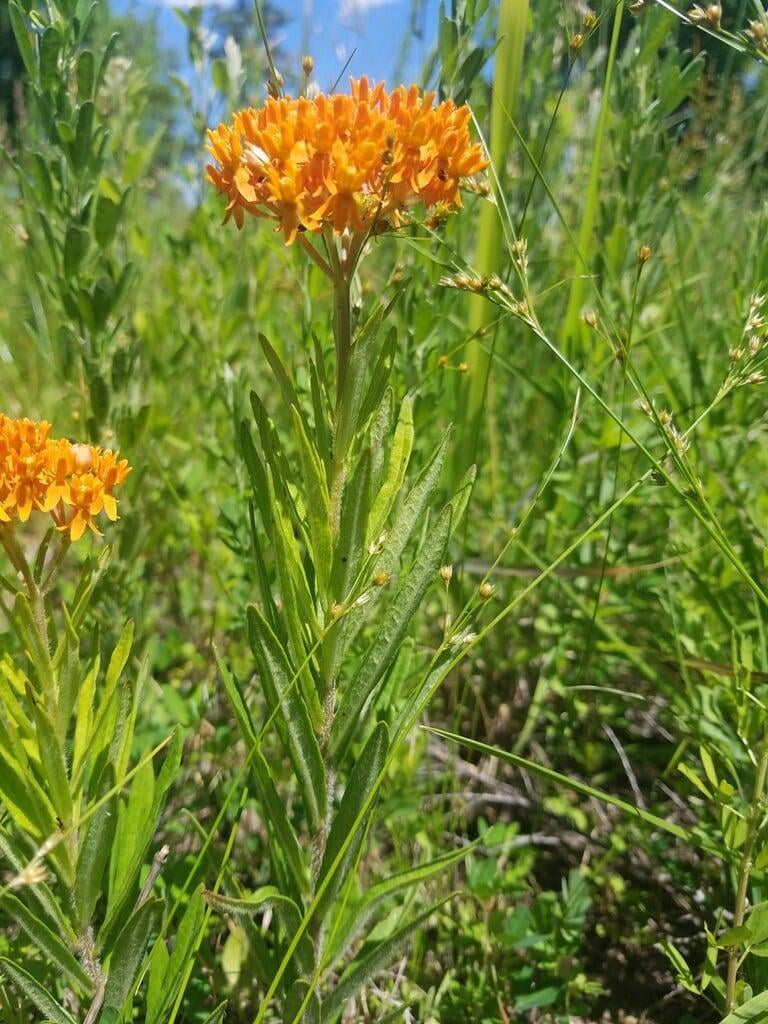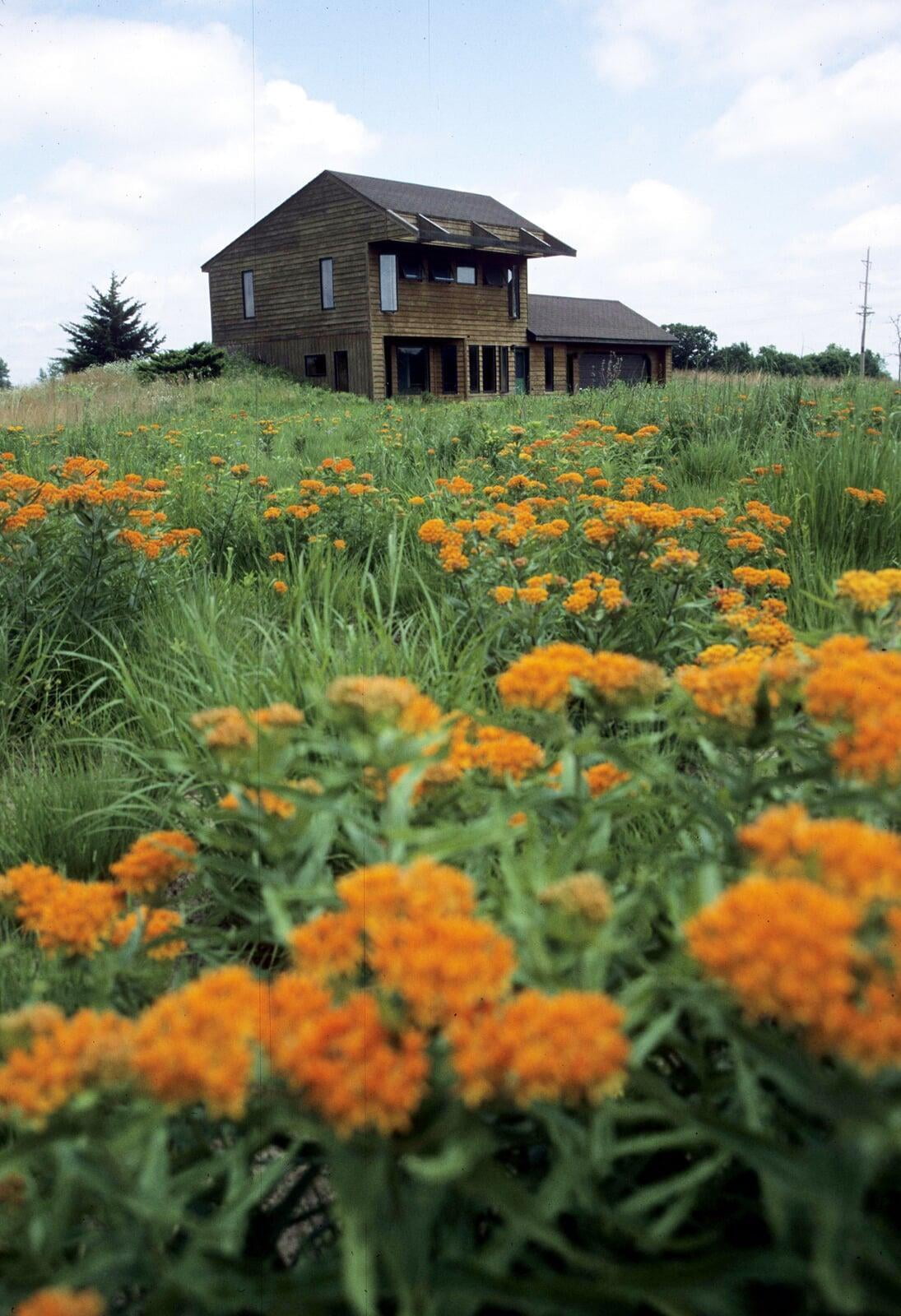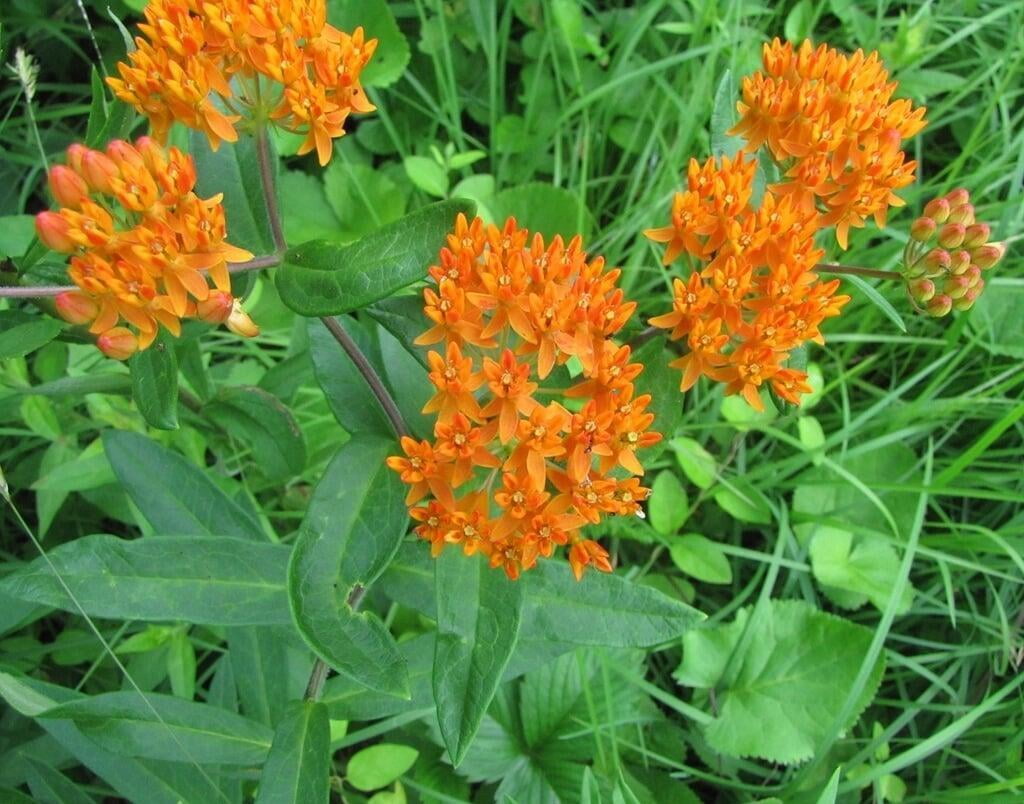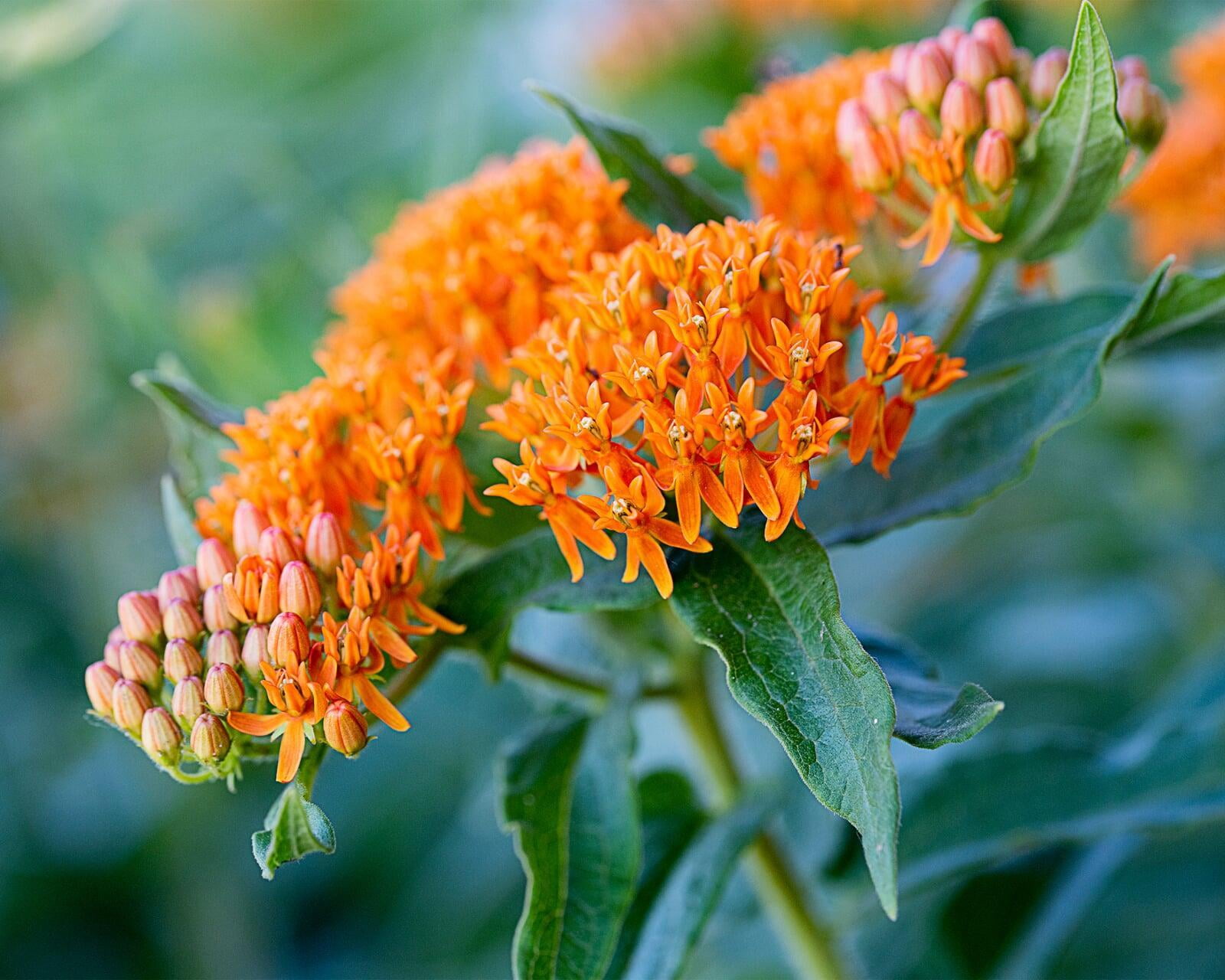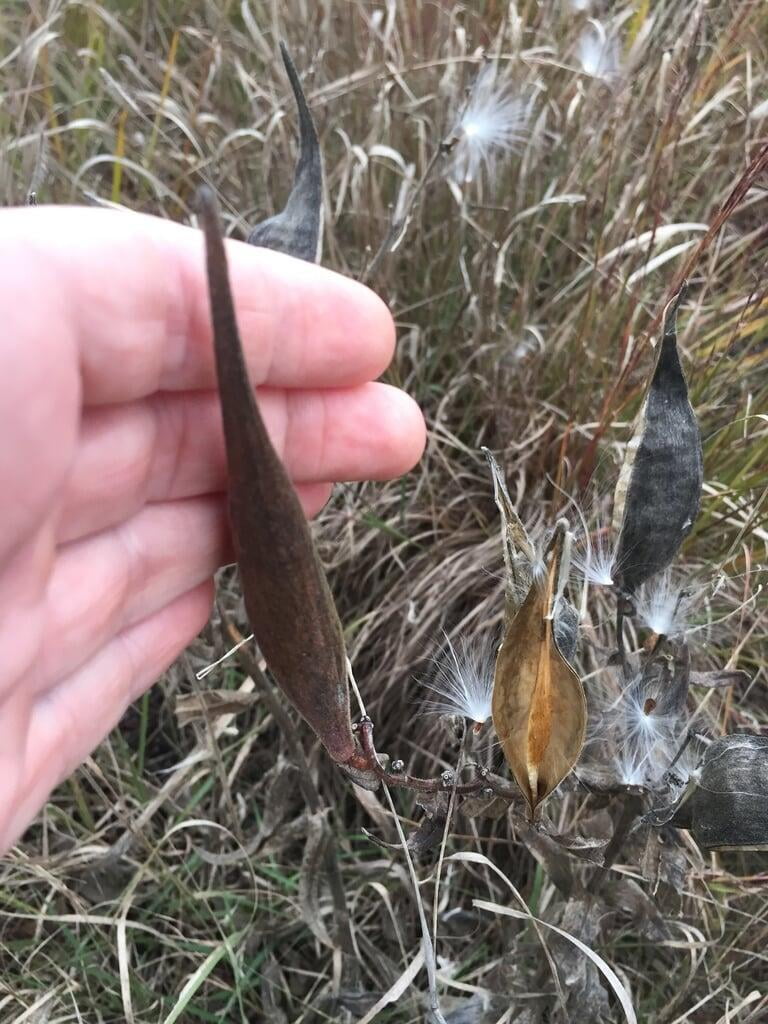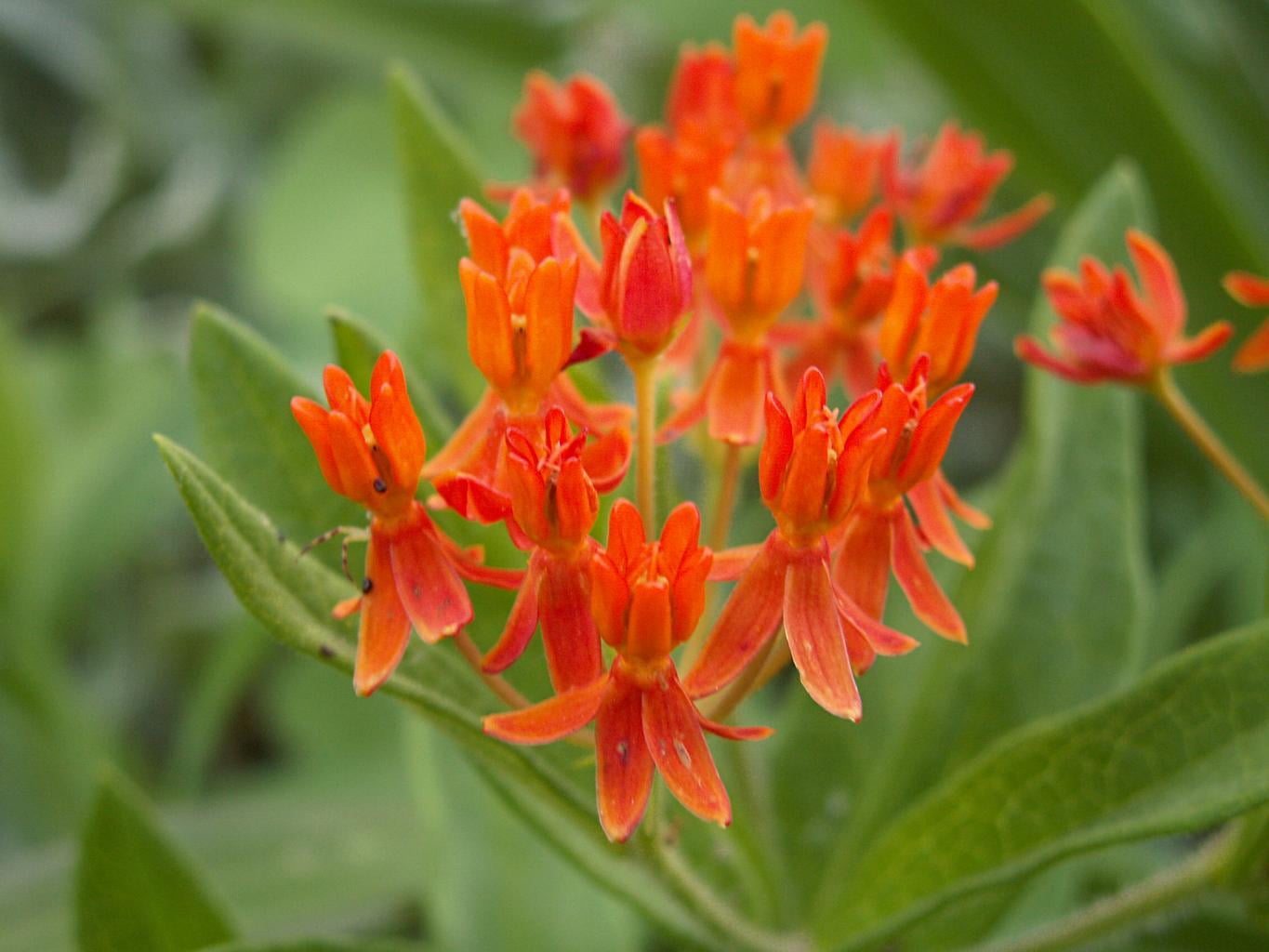Asclepias tuberosa
Butterfly weed Description:
Asclepias tuberosa, commonly known as Butterfly Weed or Orange Milkweed, is a perennial herbaceous plant that is native to North America. It typically grows to a height of 1-3 feet (0.3-0.9 meters) and spreads to about 1-2 feet (0.3-0.6 meters) wide. The plant has a deep taproot, which makes it drought-tolerant and helps it survive in a variety of soil types.
The leaves of the Asclepias tuberosa plant are long and narrow, measuring about 3-6 inches (7.6-15.2 cm) in length and 1-2 inches (2.5-5.1 cm) in width. The leaves are arranged oppositely on the stem and have a slightly fuzzy texture.
Asclepias tuberosa produces clusters of small, bright orange flowers at the top of the stem from late spring to mid-summer. The flowers have a unique structure consisting of five petals and five sepals that are fused to form a distinctive hood-shaped structure called the corona. The corona contains a nectar-rich reservoir that attracts a variety of pollinators, particularly butterflies and bees.
After the flowers are pollinated, Asclepias tuberosa produces elongated, spindle-shaped seed pods that can reach up to 5 inches (13 cm) long. These seed pods are filled with numerous small seeds that are attached to silky, white floss, which helps them to disperse in the wind.
Overall, Asclepias tuberosa is an important plant for pollinators, particularly butterflies, which rely on it as a host plant for their eggs and as a food source for their larvae. The plant is also used in traditional medicine for various ailments, and its young shoots were historically used as a vegetable by Native American tribes.
Native Range:
Butterfly weed is a widespread native plant that reaches from Minnesota south to Texas. It is also found as far west as California and as far east as Florida.
Standard Plant Information:
Plant Height: 1' - 3'
Bloom Time: June - September
Preferred Habitat: Does well in part full sun and dry, open prairies.
Sowing:
For most homeowners, the best option is to scatter seed on the ground by hand broadcasting at a minimum of 16-64 pls ounces per acre. For even coverage, we recommend that you broadcast seed in perpendicular rows across the site to ensure even coverage.
You’ll want to broadcast any grass seed first, which will get raked into the soil lightly. Next, it is ideal to mulch the area lightly with either a clean (no seed) straw or preferably with our native Little Bluestem straw, sold at our retail garden centers. After a light mulching is complete, now it’s time to broadcast your native wildflower seeds, which should not be raked into the soil. A good rain or watering is sufficient to cover the seed.
Planting:
Simply dig a hole in the soil slightly larger than the plant’s roots. Ensure that the soil line of the plant is maintained during the transfer (i.e. the plant should be at the same level with the ground as it was in the pot). Pack any loose dirt back around the plant and make sure you water it well the same day to ensure it has the best chance of survival.

